Over the past three years, I have coordinated three focuses on lesbian/queer women writers, with nine guest posts, two interviews (one by myself and one by Marisa Wikramanayake) and a post surveying lesbian characters in crime writing (by Bernadette Bean). These posts have canvassed literary, young adult and genre fiction, as well as memoir and poetry. I have also put together a list of lesbian/queer women writers for readers to consult if they want to explore this area further.
As an academic in Australian literature, I’m trained to look for themes and motifs that reveal something of our culture in the books we read and I thought that, after several years, it would be a good time to see what trends can be derived by looking at writing by lesbian/queer authors. From the guest posts, it’s clear that one of the main preoccupations is the issue of becoming visible in communities, both social and literary. This was highlighted in our first guest post by Michelle Dicinoski, author of Ghost Wife, who writes:
When you are a gay or lesbian or queer or trans writer, or a writer with disability, or a writer of colour, maybe you are always writing in the light, always aware in some way of your own shadow. Maybe identity is more present for us than it is for other writers—not just our identities as whatever “minorities” we happen to fall into, but identity in the broader sense. Who we think we are, and how we became that. How people see us.
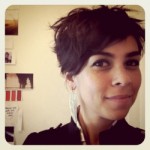 This is crystallised in a physical way for Eleanor Jackson. A performance writer, she is acutely aware that ‘what I look like, as a woman, as a queer woman, as a woman of colour (light-skinned or otherwise) says something to an audience that I cannot always control, let alone neutralise.’ To combat this, she insists on ‘taking up space – a kind of regular and repeated coming out as a writer’.
This is crystallised in a physical way for Eleanor Jackson. A performance writer, she is acutely aware that ‘what I look like, as a woman, as a queer woman, as a woman of colour (light-skinned or otherwise) says something to an audience that I cannot always control, let alone neutralise.’ To combat this, she insists on ‘taking up space – a kind of regular and repeated coming out as a writer’.
![]() By contrast (for no group is monolithic) there are lesbian/queer writers for whom the conflation of their identity with their characters’ is not something they insist upon. Lee Winter, author of The Red Files, writes touchingly of her vulnerability: ‘Even if you’re out of the closet to everyone from the postie to your Great Aunt Mavis, it doesn’t necessarily mean you want them to read those vulnerable moments in your lesbian romance where your tender heart’s been stitched to your sleeve.’
By contrast (for no group is monolithic) there are lesbian/queer writers for whom the conflation of their identity with their characters’ is not something they insist upon. Lee Winter, author of The Red Files, writes touchingly of her vulnerability: ‘Even if you’re out of the closet to everyone from the postie to your Great Aunt Mavis, it doesn’t necessarily mean you want them to read those vulnerable moments in your lesbian romance where your tender heart’s been stitched to your sleeve.’
As Lee notes, lesbian and queer writers have rarely been seen at all. She adds, ‘I remember never talking about, writing about nor hearing about gay people in Australia when growing up. There was an unspoken rule of “Fine, be gay. Just don’t talk about it”.’
 Sometimes lesbian and queer people become invisible and cryptic to avoid persecution, as Yvette Walker, author of Letters to the End of Love, writes:
Sometimes lesbian and queer people become invisible and cryptic to avoid persecution, as Yvette Walker, author of Letters to the End of Love, writes:
Queer people align themselves with the magical, the mysterious, the fey and the glamorous because we are conjurors at heart, vaudeville magicians – we have had to be in order to survive the numerous and varied punishments metered out to us over the centuries. We appear. We disappear. We are in. We are out. Our history (such as it is) has mostly been made on the run, written in code, whispered from one generation to another.
 While our society is slowly (so slowly!) beginning to accept fluid sexualities, it’s still difficult to be a young person who isn’t heterosexual, as Eden S. French found. She spent her ‘school years in libraries, as many queer children do’ and ‘the books themselves kept [her] persecutors at bay’. Yet, as she grew into a published writer through The Diplomat and Fruit of the Golden Vine, this escapism became an asset. Now Eden finds that ‘the urge to escape has become indistinguishable from my desire to resist’. Writing escapism is a means of acquiring agency.
While our society is slowly (so slowly!) beginning to accept fluid sexualities, it’s still difficult to be a young person who isn’t heterosexual, as Eden S. French found. She spent her ‘school years in libraries, as many queer children do’ and ‘the books themselves kept [her] persecutors at bay’. Yet, as she grew into a published writer through The Diplomat and Fruit of the Golden Vine, this escapism became an asset. Now Eden finds that ‘the urge to escape has become indistinguishable from my desire to resist’. Writing escapism is a means of acquiring agency.
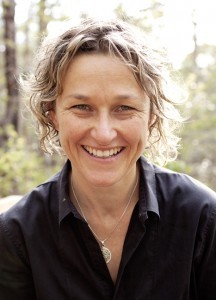 And it’s a way of creating powerful lesbian and queer characters. Often, when lesbians are visible in mainstream literature and film they are, as Inga Simpson writes, portrayed in a negative light, as ‘monsters or victims.’ Their relationship with other women, she continues, is ‘a temporary aberration only disrupting the true relationship with Mr Right.’ When she came to her third novel, Where the Trees Were, Inga created a lesbian character, Jay, with ‘a touch of the heroic’ as a way of writing against the tide of negative stereotypes.
And it’s a way of creating powerful lesbian and queer characters. Often, when lesbians are visible in mainstream literature and film they are, as Inga Simpson writes, portrayed in a negative light, as ‘monsters or victims.’ Their relationship with other women, she continues, is ‘a temporary aberration only disrupting the true relationship with Mr Right.’ When she came to her third novel, Where the Trees Were, Inga created a lesbian character, Jay, with ‘a touch of the heroic’ as a way of writing against the tide of negative stereotypes.
 Through works such as Eden’s and Inga’s we can see how important literature is not only for writers, but also for their readers. If girls weren’t there for lesbian/queer readers to identify with, they learned to read between the lines, as Kelly Gardiner writes in her excellent piece on tomboys: ‘Young readers often read texts the way they want to, regardless of the words on the page. Queer readers and all of us who are shoved to the margins learn to read or imagine subtext at an early age.’ These readers identified with tomboys, who were usually given male names and were often, disappointingly, tamed. Kelly’s characters never settled, and you can read about them in her Swashbuckler books.
Through works such as Eden’s and Inga’s we can see how important literature is not only for writers, but also for their readers. If girls weren’t there for lesbian/queer readers to identify with, they learned to read between the lines, as Kelly Gardiner writes in her excellent piece on tomboys: ‘Young readers often read texts the way they want to, regardless of the words on the page. Queer readers and all of us who are shoved to the margins learn to read or imagine subtext at an early age.’ These readers identified with tomboys, who were usually given male names and were often, disappointingly, tamed. Kelly’s characters never settled, and you can read about them in her Swashbuckler books.
Reading between the lines – another conjuring act, like those mentioned by Yvette – testifies to the importance of subversion and imagination. Francesca Rendle-Short, author of Bite Your Tongue, grew up in a family that didn’t read, and which feared change. She thinks she became a writer because she ‘came from a family that eschewed telling stories, that feared the imagination, that lived in a literal world, a black and white world, a fixed world where telling the truth – the so-called truth – was predicated on the dogmatic word of God’. When Francesca began to explore what imagination has to offer, she found ‘the imaginary can change things, big and small. You can imagine different sorts of endings, different beginnings. You can alter your point of view; you don’t have to come to conclusions, you can be slow to judge or not judge at all.’
Becoming visible is necessary for some of these writers, and not so much for others, but it is always fraught. It requires a hefty dose of bravery in a country in which takes heterosexuality for granted and allows little air for alternatives.
 Speaking as a creative writer rather than an academic, it’s evident that there are elements in our publishing and reviewing industries that impact on the reception of books by lesbian and queer writers. Tricia Dearborn, for example, cites the example of the reviewer who was fixated on her sexuality, though that presence was barely visible in her poems in Frankensetin’s Bathtub. As she notes, reviewing is important for writers who are trying to establish themselves, and ‘bad reviews have been known to kill careers.’
Speaking as a creative writer rather than an academic, it’s evident that there are elements in our publishing and reviewing industries that impact on the reception of books by lesbian and queer writers. Tricia Dearborn, for example, cites the example of the reviewer who was fixated on her sexuality, though that presence was barely visible in her poems in Frankensetin’s Bathtub. As she notes, reviewing is important for writers who are trying to establish themselves, and ‘bad reviews have been known to kill careers.’
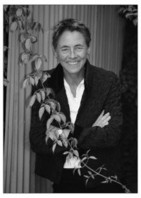 This leads into the wider issue of reviewing and the purpose of the Australian Women Writers Challenge: to raise the profile of Australian women writers when space in mainstream reviewing publications is shrinking, and which is still dominated by books by male authors. We do this not only through our posts and social media, but through service: Elizabeth Lhuede recently successfully nominated lesbian author and publisher Susan Hawthorne for an Inspire Award for writing. These awards are hosted by the Supreme Court of Victoria and celebrate the outstanding achievements of human right activists, lawyers, community volunteers, artists, performers, writers, disability advocates, community services, athletes, veterans and more, who identify with a disability and who are nominated by their peers.
This leads into the wider issue of reviewing and the purpose of the Australian Women Writers Challenge: to raise the profile of Australian women writers when space in mainstream reviewing publications is shrinking, and which is still dominated by books by male authors. We do this not only through our posts and social media, but through service: Elizabeth Lhuede recently successfully nominated lesbian author and publisher Susan Hawthorne for an Inspire Award for writing. These awards are hosted by the Supreme Court of Victoria and celebrate the outstanding achievements of human right activists, lawyers, community volunteers, artists, performers, writers, disability advocates, community services, athletes, veterans and more, who identify with a disability and who are nominated by their peers.
Yet I have been wondering if we are doing enough for writers who are bisexual, intersex, or trans. At the same time, I also wonder if it is our role to do this, as some genderless writers are understandably uncomfortable with appearing on a platform for women writers.
I would love to hear from the AWW community about their thoughts on this – if we can do more to be inclusive, and how we might go about this (you are welcome to comment below!). Above all, we aspire to promote writing which might be overlooked, for without stories, there is no richness, plurality, magic or kindness. As Inga puts it: ‘Story allows us to reimagine our lives, alternate futures, other possibilities – more generous and inclusive societies.’
~
About Me
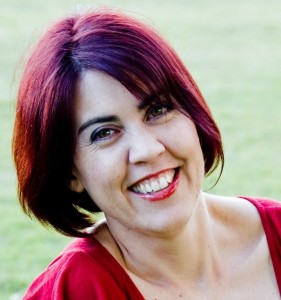 I’m Jessica White, a novelist and researcher, and I’ve been deaf since age four when I lost most of my hearing from meningitis. I have a PhD from the University of London and have published two novels with Penguin, A Curious Intimacy (2007) and Entitlement (2012). My third novel, currently in-progress, has been funded by an Artists with Disability grant from the Australia Council for the Arts. I have also almost completed a work of creative nonfiction on Maud Praed, the deaf daughter of 19th Century Queensland novelist Rosa Praed, and am currently writing an ecobiography of 19th Century botanist Georgiana Molloy and the environment of south-west Western Australia. You can find more information about me at my website. I’m also on Twitter @ladyredjess.
I’m Jessica White, a novelist and researcher, and I’ve been deaf since age four when I lost most of my hearing from meningitis. I have a PhD from the University of London and have published two novels with Penguin, A Curious Intimacy (2007) and Entitlement (2012). My third novel, currently in-progress, has been funded by an Artists with Disability grant from the Australia Council for the Arts. I have also almost completed a work of creative nonfiction on Maud Praed, the deaf daughter of 19th Century Queensland novelist Rosa Praed, and am currently writing an ecobiography of 19th Century botanist Georgiana Molloy and the environment of south-west Western Australia. You can find more information about me at my website. I’m also on Twitter @ladyredjess.

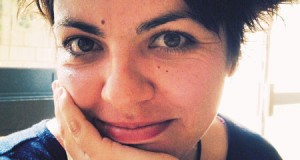





This is a really interesting compilation of ideas and one I’m going to walk around thinking about for a while. As women writers we are used to being the underdogs and always having our femaleness seen as a feature of our work even when we wish books were not categorized by the gender of their authors. Once you zoom in on a subset of women writers, there’s pressure to represent a minority viewpoint as if that work is exclusively about being gay, or disabled, or of color etc. and it becomes increasingly difficult to escape those constraints and push the book back into the wider context of general human experience. Will Kostakis and Erin Gough were just talking about this at the All Day YA event on Saturday as well.
Hi Nicole,
Great to hear from you, and thanks for your thoughts. I too worry about the categorisation of subgroups, but unfortunately I think it’s necessary to stop them from being swamped by the mainstream. I also recognise that, as women, we do a lot of the flag waving, but if we don’t do this, who will – the patriarchy hasn’t done much for us yet (!) So I’m thinking of at least expanding our focus on lesbian/queer to LGBTIQ next year.
Cheers,
Jess.
I think that’s a sound idea, and agree with you about the necessity. We still have a long way to go!
It’d be great to have a list somewhere – I don’t usually read an author because they’re female or LGBTQI or disabled – I read them either because the story has caught my eye, or they’re a favourite author. Usually how they identify doesn’t become a factor in my decision to read or not read, rather, genre or the plot will be the deciding factor for me. In this process, I find it’s possible I read authors who don’t identify with the mainstream possibly without knowing – but finding out wouldn’t change my thoughts on the book or author. It’d just be oh okay, cool. Move on, next book. what else have they written?
Hi Ashleigh,
I love your reading approach! And I agree that above all, the story is the most important thing. If you do want to see what else authors have written, I’ve put together a list here:
http://australianwomenwriters.com/queer-women-writers/
Cheers,
Jessica.
I really like this post. I think it’s a very good thing for authors who are comfortable with and want to identify themselves as lesbian/queer to have a place to do so. Younger women and girls can then have role models that are accessible and relatable, they can reach for these books, seek interaction with the authors they then relate to without being made to feel ‘different’. I hope I’m expressing this right, it’s just that I work with teens on a daily basis and witness stigma and shame in action. Anything to help break this can only be considered for the good. There is still too much judging differences present in our society instead of celebrating differences, in my view.
Hi Theresa,
Thanks for your thoughts! & for your nice comments on the post. It is very hard for young folk, especially when it takes a long time to grow resilience. This has made me think about trying to find more YA authors for future roundups.
Cheers,
Jessica.
An excellent idea!